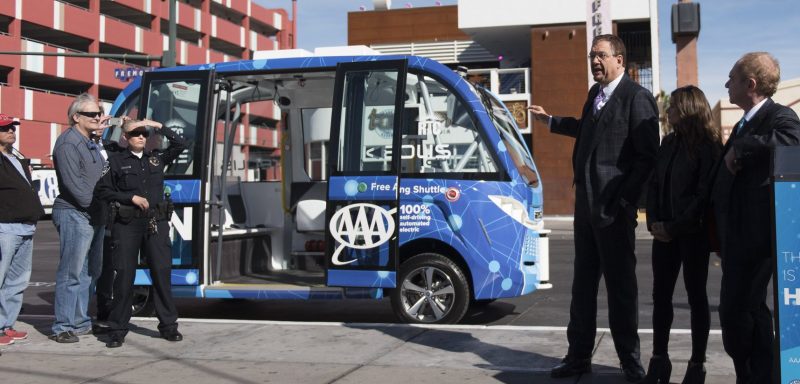The only constant in the city of Las Vegas is change. The city swells up and down in population within a brief span of time; a million people can arrive and leave in the space of three or four days. Las Vegas is also one of the fastest growing cities in the United States.
When Michael Sherwood, Director of Technology and Innovation for Las Vegas, assumed his role about three years ago, he was tasked with improving the city’s outlook for the future. Speaking at Esri’s Public Sector CIO Summit in Redlands, California, this month, he pointed out that people will choose to live in areas with good infrastructure and good data. He wanted to use visualization through mapping to help Las Vegas distinguish itself as a place with innovative technology.
The first challenge Sherwood faced was not the challenge of the technology itself, but rather of mindsets around change. He noticed that people give far less attention to the internal workings of their job — why they do what they do — than they give to external appearances.
Sherwood set himself apart as someone who asked hard questions, such as asking the parks department why it chose to pick up trash on Mondays. The response was along the lines of, “we’ve always done it that way.” Sherwood cared less about the answer than he did about the process people took to get there. He worked to get city employees to think differently and question why they do the things they do. This created space for dialogue and consideration of new ideas and alternatives.
Sherwood understood that one of the challenges he faced was getting people to understand that the innovations adopted by Las Vegas aren’t done for the sake of obtaining technology, but rather to improve operations.
For example, the autonomous shuttle effort that Sherwood helped launch successfully transported 40,000 people within a year. The shuttle also functioned as a sensor for the city; as it drove around and collected data on pothole locations that fed back into Esri infrastructure.
However, the start of this initiative was inauspicious. Sherwood had been on the job for three weeks, he had reviewed the safety proposal for the vehicle, and he had promised the mayor that the vehicle was safe. Within the first four hours of launching the vehicle, it was hit.
The shuttle lacked the one technology that all cars have today: a horn. When a truck backed up dangerously close to the shuttle, the shuttle did what it had been taught to do in the face of danger: stop. To prevent injury, the doors in the vehicle locked down, and since there were no mechanisms to alert the truck driver of the shuttle behind it, the shuttle got hit.
“We were the first state in the U.S. to cite a vehicle for hitting an autonomous vehicle,” Sherwood said. No injuries were reported, and the shuttle ran smoothly after that incident.
The use of the shuttle to collect data as well as transport people underscored one of Sherwood’s messages to state and local governments: Instead of building something cost-heavy and elaborate, use the tools already available to you.
“I hope all of you don’t look in the rearview mirror anymore,” Sherwood said. “Instead, think about how you can look forward and change your city by doing simple things with the technology you already have.”
Sherwood and his team use GIS to get real insights and predict when potholes will form in the street, where people are going to be before they get there, and when someone will make a wrong turn on a one-way street and go in the opposite direction. They also use GIS to monitor parks so public safety departments can use their patrolling resources more strategically to respond to incidents.
“All of this is important for our operations,” Sherwood explained. “The last thing we want is for you to not have a good experience in Las Vegas. We also want to increase engagement and improve operational efficiency.”





Las Vegas is such an interesting unique city Sherin! Thanks for explaining their specific cybersecurity and technology challenges and solutions. Great read!